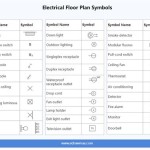How to Encourage Exuberant Plant Growth: Tips for Flourishing Houseplants
Nurturing vibrant houseplants that thrive and exuberate with growth is a fulfilling endeavor. While some plants seem to thrive effortlessly, others may require a little extra TLC to reach their full potential. By understanding the fundamental requirements of plant growth and implementing these tips, you can create an environment that fosters rapid and healthy development for your beloved houseplants.
1. Providing Adequate Lighting
Light is the lifeblood of photosynthesis, the process by which plants convert sunlight into energy for growth. Different plants have varying light requirements, so it's crucial to research the specific needs of each species. Most houseplants prefer bright, indirect light, while some may tolerate lower light conditions. Avoid placing plants in direct sunlight, as this can scorch their leaves.
2. Optimal Temperature and Humidity
Temperature and humidity play a significant role in plant growth. Most plants thrive in temperatures between 65-80°F (18-27°C). Extremes in temperature can stress plants, hindering their growth. Similarly, maintaining adequate humidity levels is essential, especially for tropical plants. Misting leaves regularly or using a humidifier can increase humidity around plants.
3. Watering Wisely
Watering is crucial, but overwatering can be detrimental to plant health. Allow the soil to dry slightly between waterings to prevent root rot. The frequency of watering will vary depending on the plant, pot size, humidity, and temperature. Use a moisture meter to accurately gauge soil moisture levels before watering.
4. Fertilizing for Growth
Fertilizing provides essential nutrients that plants need for rapid growth and lush foliage. Use a balanced liquid fertilizer diluted to half strength. Fertilize regularly during the growing season, but avoid fertilizing during the winter months when plants are dormant.
5. Repotting for Expansion
As plants grow, their roots will eventually outgrow their pots. Repotting into a larger pot provides more space for root expansion and fresh soil with vital nutrients. Repotting should be done every 1-2 years or when roots start to emerge from drainage holes.
6. Pest and Disease Control
Pests and diseases can hinder plant growth and overall health. Regularly inspect plants for any signs of infestation or disease. Treat any issues promptly using appropriate pesticides or fungicides. Maintaining good plant hygiene, such as removing dead leaves and debris, can help prevent pest and disease problems.
7. Pruning for Shape and Vigor
Regular pruning promotes healthy growth and encourages bushier plants. Remove dead, diseased, or damaged leaves and stems. Pruning can also be used to shape plants and control their size. Pinching back tips of stems stimulates branching and results in fuller plants.
By incorporating these essential tips into your plant care routine, you can create an environment that fosters rapid and healthy growth for your cherished houseplants. Remember, observing your plants and understanding their specific needs will help you adjust these tips to optimize their growth and bring joy to your living spaces.

How To Make Plants Grow Faster 5 Easy Tips By Ourhouseplants

How To Grow And Take Care Of Indoor Plants

How To Grow Plants Faster And Bigger At Home Lazygardener

How To Make Your Plants Grow Faster Other Spring Tips Interior Green International

Plants That Grow In Water A No Fuss Way To Houseplants

3 Things That Will Make Your House Plants Grow Faster Newplantgrowth Tiktok

Make Your Plants Grow Faster And Get That Harvest You Want

Plants That Grow In Water A No Fuss Way To Houseplants

10 Fast Growing Easy Indoor Plants Easiest Fastest Houseplants

Top 12 Fast Growing Indoor Plants To Fill Your Home Omysa








